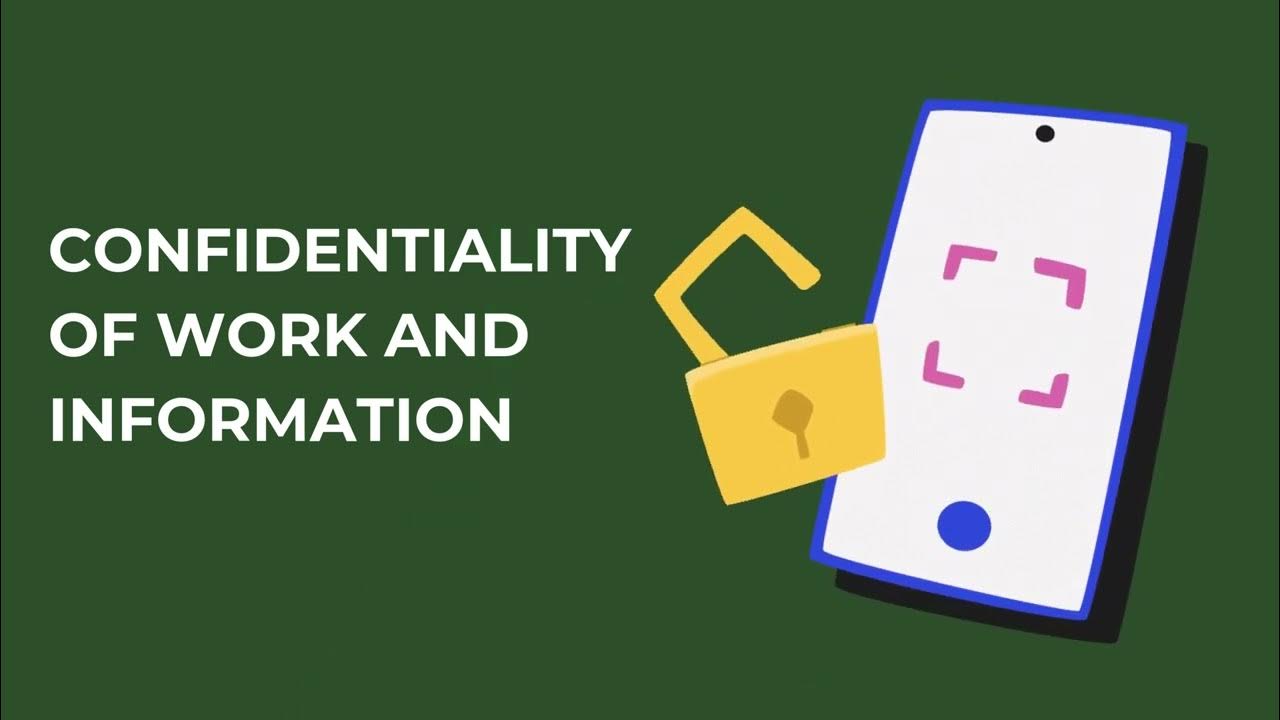Guidelines for Dealing with Confidential Information
Summary
TLDRThis video outlines essential guidelines for safeguarding confidential information. Key points include securing login credentials, protecting mobile devices and USB drives, never leaving computers unattended with sensitive data visible, and ensuring that any transmission of confidential information is legal and secure. It also emphasizes following record management policies for retaining or destroying confidential records and promptly reporting any security or privacy breaches. The video highlights the importance of compliance with privacy and security protocols to maintain the confidentiality of sensitive information.
Takeaways
- 😀 Safeguard your username, password, and any other access credentials for systems and applications dealing with confidential information.
- 😀 Protect mobile devices, such as smartphones, tablets, and USB drives, that contain confidential information.
- 😀 Never leave your computer unattended when confidential information is visible on the screen.
- 😀 Ensure that transmitting confidential information to others complies with the law and privacy/security policies.
- 😀 Confirm that the recipient has a legitimate business purpose for receiving confidential information.
- 😀 Only send the minimum amount of confidential information necessary for the recipient's needs.
- 😀 Use protected transmission methods, like encryption, when required by policies or law.
- 😀 Retain or destroy confidential information in accordance with the organization's record management policy.
- 😀 Report any security incidents or privacy breaches immediately upon becoming aware of them.
- 😀 The guidelines aim to help you understand the proper handling of confidential information to maintain security.
Q & A
What is the first guideline for dealing with confidential information?
-The first guideline is to safeguard your username, password, and any other access credentials for systems and applications that handle confidential information.
Why is it important to protect mobile devices such as smartphones and USB drives?
-It's important to protect mobile devices because they can contain confidential information that needs to be secured to prevent unauthorized access or data breaches.
What should you do if you need to leave your computer unattended while confidential information is on the screen?
-You should never leave your computer unattended when confidential information is on the screen. Always ensure it is properly secured.
What should be checked before transmitting confidential information?
-Before transmitting confidential information, ensure the transmission complies with the law and privacy policies, that the recipient has a legitimate business purpose, and that only the necessary information is shared in a protected manner (e.g., encrypted).
What is the purpose of ensuring encrypted transmission when sending confidential information?
-The purpose of encryption is to protect the confidentiality and integrity of the information being transmitted, ensuring that only authorized recipients can access and read it.
How should confidential information be retained or destroyed?
-Confidential information should be retained or destroyed according to the organization's record management policy to ensure compliance with legal and privacy regulations.
What should you do if you observe or become aware of a security incident or privacy breach?
-You should report any security incidents or privacy breaches as soon as possible to ensure timely action can be taken to mitigate the issue.
Why is it important to limit the information you share when transmitting confidential data?
-Limiting the information shared ensures that only the necessary details are transmitted, reducing the risk of exposing sensitive data unnecessarily.
What are the main factors to consider when determining whether confidential information should be sent?
-The main factors include ensuring the transmission complies with legal and privacy policies, the recipient's legitimate business purpose, and that the information is sent in a secure manner.
What role does compliance with privacy and security policies play when handling confidential information?
-Compliance with privacy and security policies ensures that sensitive information is protected, that legal requirements are met, and that the risk of unauthorized access or data breaches is minimized.
Outlines

This section is available to paid users only. Please upgrade to access this part.
Upgrade NowMindmap

This section is available to paid users only. Please upgrade to access this part.
Upgrade NowKeywords

This section is available to paid users only. Please upgrade to access this part.
Upgrade NowHighlights

This section is available to paid users only. Please upgrade to access this part.
Upgrade NowTranscripts

This section is available to paid users only. Please upgrade to access this part.
Upgrade NowBrowse More Related Video

How to protect trade secrets and confidential information In India

NHS Information Governance

NASW Code of Ethics BREAKDOWN | 1.07 Privacy and Confidentiality | PART 5

LEI DE ACESSO À INFORMAÇÃO (Lei 12.527) - RESUMO da LAI - Sigilo 100 anos

RizalMed Social Media Guidelines Orientation

Article II Offenses Involving Physical Assets
5.0 / 5 (0 votes)